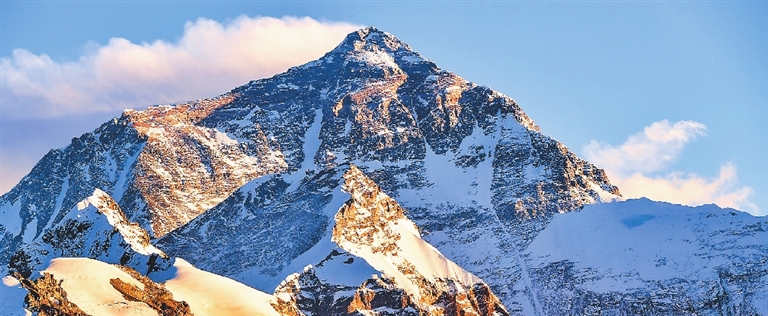
THE ban on ordinary tourists entering the core zone of the Qomolangma National Nature Reserve will not stop them from enjoying a full view of the mountain, as travelers can still reach Rongpo Monastery, a pilgrimage site two kilometers from the Mount Qomolangma base camp, according to authorities in the Tibet Autonomous Region. The reserve’s 10,312-square-km core zone, home to one of the world’s most vulnerable ecosystems, will continue to be open to mountaineers with climbing permits. The region’s Dingri County banned ordinary travelers in December from going to base camp, which lies at an altitude of 5,200 meters in the core area, for reasons of environmental protection. However, the ban triggered some social media reports to mistakenly say that the Qomolangma base camp will be “permanently closed due to heavy pollution.” Kelsang, deputy director of the reserve’s administration, told Xinhua News Agency that ordinary tourists are banned from areas above Rongpo Monastery, which is about 5,000 meters above sea level. Though ordinary visitors can’t go beyond the monastery, they can still see the mountain. “The new tent camp for ordinary tourists allows them to have a clear vision of the 8,800-meter-plus mountain,” Kelsang said. Qomolangma, known as Mount Everest in the West, has become a popular landmark for travelers in recent years. Visits reached 140,000 last year, with significant negative consequences to the environment from human impact, government authorities said. Between April and October each year, residents of Dingri County set up black tents at the foot of Qomolangma to provide accommodations for tourists and earn money. Chen Shougui, a 41-year-old nature reserve guide, said about 50 small camps were built at the altitude of 5,200 meters. Each of the camps can handle 20-plus travelers per day during the half-year active season. “Masses of people left human waste and non-biodegradable trash behind. The site once looked like a dumping ground,” said Chen, who supports the new policy. “Actually, there is no difference for travelers in viewing the mountains from the monastery or the base camp, but the rush to the camp has resulted in heartbreaking damage to the reserve.” Three major cleanups were carried out by local guides and herdsmen at altitudes above 5,200 meters last year, with about 8.4 metric tons of waste collected, according to the government. This year, the cleanup will continue, and the remains of deceased mountaineers at an altitude of above 8,000 meters will be dealt with in an orchestrated effort for the first time. In addition to the limits on ordinary visitors, mountain climbers will also be placed under stricter scrutiny to reduce environmental impact, Xinhua reported, citing Tibet’s regional sports bureau. Climbing activities will be limited to spring, with some of the revenues channeled to cleanup efforts, the report said. (China Daily) | 
